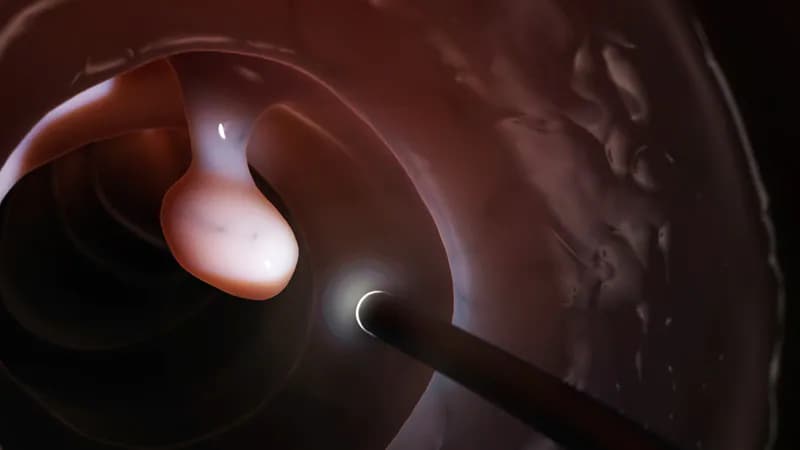Biopsy of a colorectal cancer (CRC) is highly unlikely to “seed” another cancer when performed on nontumor sites during the same colonoscopy, according to a large retrospective study.
A recent “proof-of-principle” study demonstrated that it is biologically possible that biopsy of noncancerous mucosa during CRC biopsy could “implant” cancer cells in healthy tissue, which, in time, could cause a new cancer to form at the site of the second biopsy.

Dr Douglas Corley
Yet the new study showed “no association, beyond chance, between having an area of the colon biopsied after a cancer is biopsied and subsequent development of a new tumor at that site,” Douglas Corley, MD, PhD, research scientist in the Division of Research at Kaiser Permanente Northern California, told Medscape Medical News.
“It should be reassuring for both colonoscopists and patients who have had a cancer found during a colonoscopy to know that our work shows this is not a common reason for people to get a second cancer,” said Corley, a gastroenterologist with Kaiser Permanente San Francisco.
The study was published online in Clinical Gastroenterology and Hepatology.
Among 14,119 adults diagnosed with an initial CRC via colonoscopy and biopsy, 107 were diagnosed with a second CRC within 6 months to 4 years after the index CRC.
After exclusions for recurrent or synchronous CRC, 45 cases of a second primary (metachronous) CRC were matched to up to five control patients (212 total) for whom a second CRC was not diagnosed within 4 years of the initial CRC.
The exposure of interest was biopsy in the colonic segment of the metachronous CRC (or corresponding segment in control patients).
Five of 45 case patients (11.1%) underwent a post-tumor biopsy and/or polypectomy at the segment where metachronous CRC developed, compared to 13 of 212 control patients (6.1%).
However, patients who underwent biopsy of nontumor sites after tumor biopsy did not have a significantly higher risk of a diagnosis of metachronous CRC within the colonic segment upon which biopsy was performed compared with control patients (unadjusted odds ratio [OR]: 2.03; 95% CI: 0.70 – 5.91).
Adjusting for adequacy of bowel preparation, extent of examination, and completeness of polyp removal did not substantially change the point estimate or statistical significance (adjusted OR: 2.29; 95% CI: 0.77 – 6.81).
The findings provide no support to the concept that biopsy of noncancerous sites after biopsy of a CRC confers a “meaningfully higher risk of metachronous cancer, despite biologic plausibility,” the researchers write.
Yet, the results don’t completely exclude the possibility that tumor seeding can occur in rare instances, they acknowledge.
“Practices to mitigate this risk, such as deferring manipulation of a suspected CRC until the end of a procedure, flushing the channel after biopsy and before other manipulations, and changing biopsy forceps after biopsy of a cancer are still reasonable, though without strong evidence that they are strictly necessary,” the study team suggests.
Reached for comment, Seth A. Gross, MD, professor of medicine and clinical chief, Division of Gastroenterology and Hepatology, at NYU Langone Health, in New York, said, “There has been a concern of possible tumor seeding after a biopsy of a colon cancer is performed followed by taking a biopsy of an area of normal colon.
“Keeping in mind this scenario is rare,” said Gross, this new study “reassures clinicians that iatrogenic tumor seeding after a biopsy of a colon cancer is very low.
“However, it is still probably best to sample a suspected colon cancer as the last intervention being done during a colonoscopy,” Gross told Medscape Medical News.
Support for the study was provided by a grant from the Population-Based Research to Optimize the Screening Process (PROSPR 2) Consortium. Corley and Gross report no relevant financial relationships.
Clin Gastroenterol Hepatol. Published online May 26, 2022. Abstract
For more news, follow Medscape on Facebook, Twitter, Instagram, and YouTube.
Source: Read Full Article






